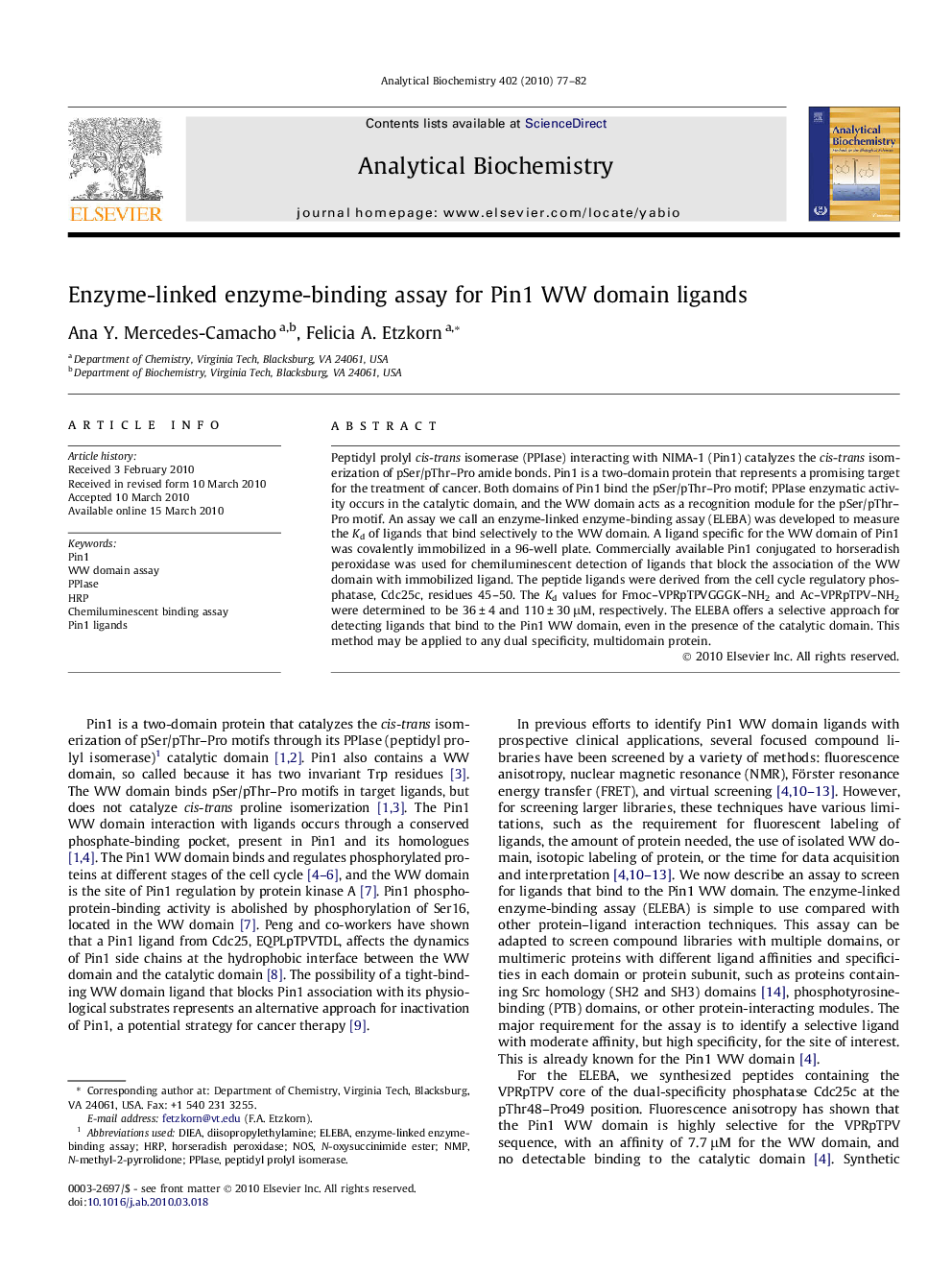| Article ID | Journal | Published Year | Pages | File Type |
|---|---|---|---|---|
| 1174620 | Analytical Biochemistry | 2010 | 6 Pages |
Abstract
Peptidyl prolyl cis-trans isomerase (PPIase) interacting with NIMA-1 (Pin1) catalyzes the cis-trans isomerization of pSer/pThr-Pro amide bonds. Pin1 is a two-domain protein that represents a promising target for the treatment of cancer. Both domains of Pin1 bind the pSer/pThr-Pro motif; PPIase enzymatic activity occurs in the catalytic domain, and the WW domain acts as a recognition module for the pSer/pThr-Pro motif. An assay we call an enzyme-linked enzyme-binding assay (ELEBA) was developed to measure the Kd of ligands that bind selectively to the WW domain. A ligand specific for the WW domain of Pin1 was covalently immobilized in a 96-well plate. Commercially available Pin1 conjugated to horseradish peroxidase was used for chemiluminescent detection of ligands that block the association of the WW domain with immobilized ligand. The peptide ligands were derived from the cell cycle regulatory phosphatase, Cdc25c, residues 45-50. The Kd values for Fmoc-VPRpTPVGGGK-NH2 and Ac-VPRpTPV-NH2 were determined to be 36 ± 4 and 110 ± 30 μM, respectively. The ELEBA offers a selective approach for detecting ligands that bind to the Pin1 WW domain, even in the presence of the catalytic domain. This method may be applied to any dual specificity, multidomain protein.
Related Topics
Physical Sciences and Engineering
Chemistry
Analytical Chemistry
Authors
Ana Y. Mercedes-Camacho, Felicia A. Etzkorn,
